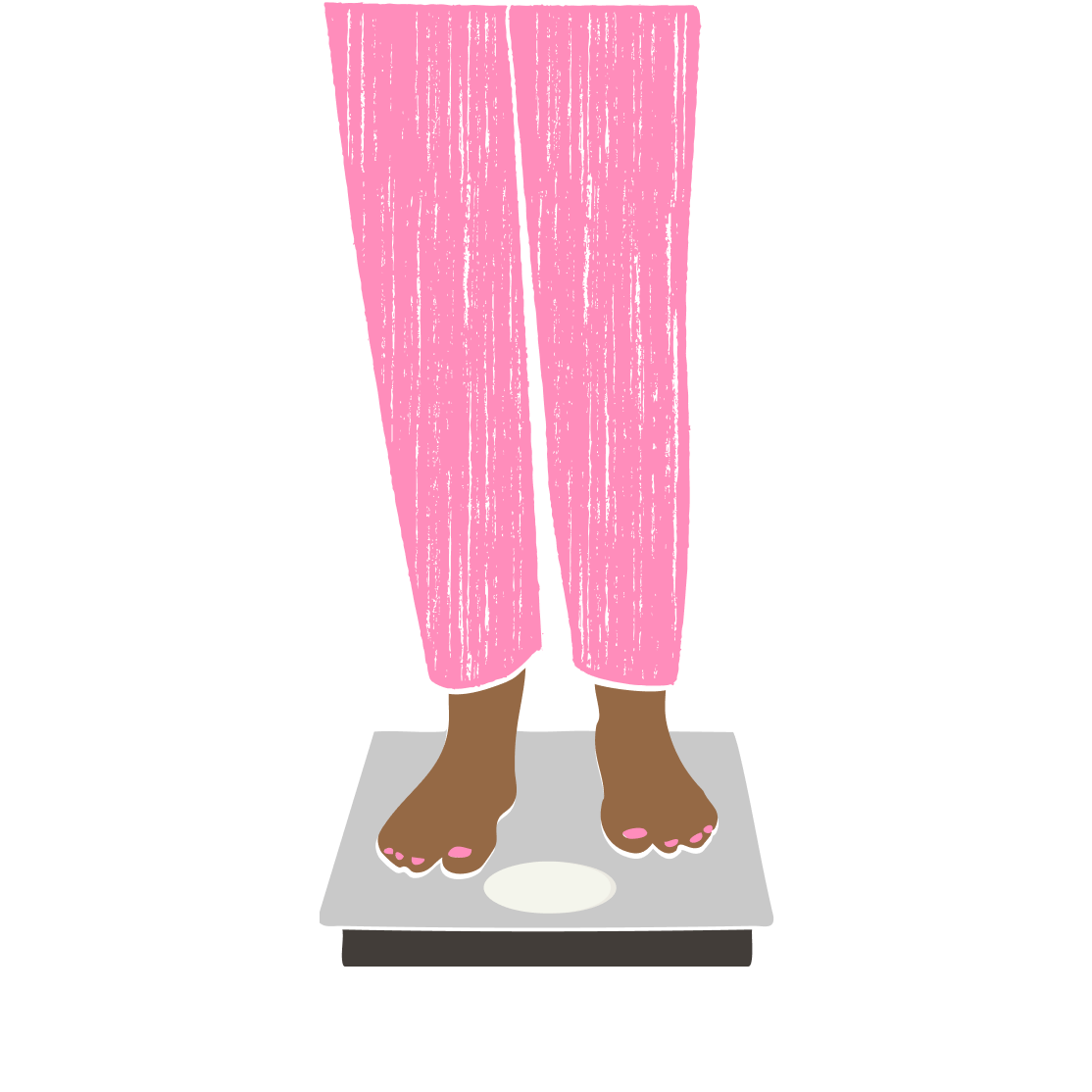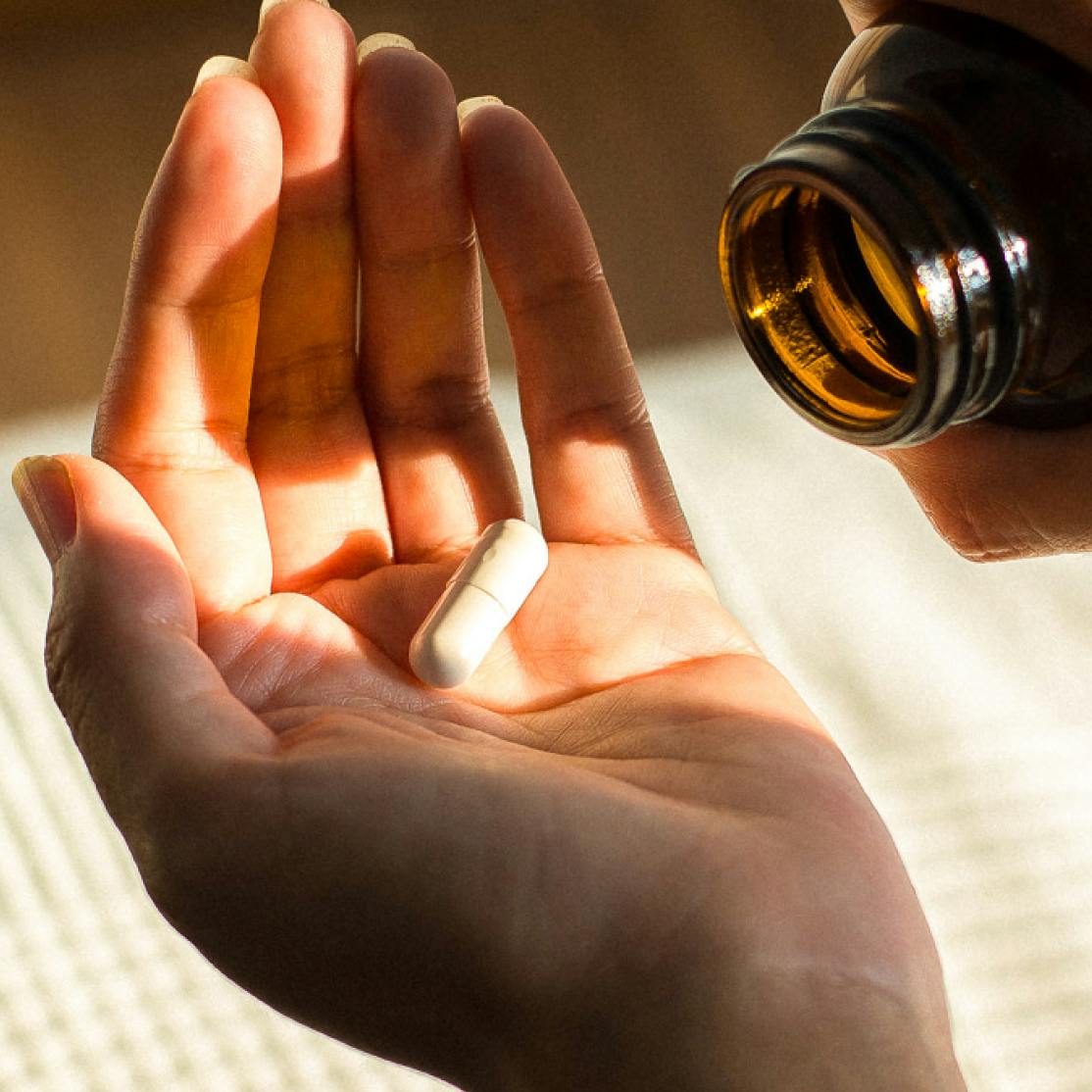As you near the end of perimenopause, your body may give you some signs that this transitional phase is winding down. While perimenopause can last anywhere from a few months to several years, recognizing changes in your menstrual cycle and other symptoms can help you know when it’s coming to a close. These signs are part of the natural progression towards menopause, marking the end of your reproductive years.
If you’ve been experiencing symptoms of perimenopause for months or years now, there’s probably one burning question on your mind: Will this ever end? We don’t blame you for asking. While this midlife phase leading up to menopause can feel liberating, the symptoms that often accompany it can be unpredictable, overwhelming, and, well, just really annoying.
So you’re not alone if you’re counting down the days: In one study, more than 90% of women reported that their perimenopause symptoms were severe enough to need medical attention. “Menopause occurs when our ovaries stop making estrogen, but it doesn't happen overnight,” says Kathleen Jordan, MD, Chief Medical Officer at Midi Health. “There is an approximately four to eight-year period before menopause, known as perimenopause, where we're seeing fluctuating estrogen levels that create a rollercoaster of symptoms.”
The good news: Perimenopause does end. And with the right support, you can weather your symptoms and spot signs that this phase is coming to a close. At Midi, our trained menopause specialists can help you understand the “why” behind perimenopausal body changes, and they can offer a range of solutions, including prescription medications, supplements, and lifestyle coaching, to help you through this transition.
Read on to learn more about perimenopause: what it is, how it works, and how long it usually lasts. There are some telltale symptoms that signal the end of perimenopause, and when you know what to look for, you can start preparing for the next stage in your journey.
Understanding Perimenopause
Perimenopausal symptoms catch a lot of women off guard. In fact, many of us don’t even know we’ve entered this phase when it happens. Learning about the root causes of perimenopause can help you better understand what’s going on in your body, so you’re able to seek out effective relief.
“Estrogen affects us everywhere,” says Dr. Jordan. “Estrogen receptors are not just in our breasts and our uterus, which is what people typically think. When our estrogen levels deplete, it can affect us all over, from our joints to our skin to our brain, which is why it interferes with our ability to concentrate.”
Defining Perimenopause
Perimenopause refers to the natural and normal period when your body adjusts to the end of your reproductive years. The name comes from “peri,” a Greek word meaning “around,” which makes sense since it happens in the years before your period stops. Menopause, on the other hand, isn’t a stage, but rather a moment: You reach it exactly 12 consecutive months after your last menstrual period.
On average, perimenopause begins in your mid-40s, but it may kick off as early as your 30s or as late as your 50s. Once it starts, it usually lasts around four years, but for some perimenopause stretches out up to 10 years. For others, it only lasts a few months.
But why is this happening? One word: Estrogen. During perimenopause, hormones fluctuate dramatically, particularly estrogen. Levels rise and fall daily and monthly, but estrogen gradually trends downward, just not in a linear way.
This is your reproductive system’s way of closing up shop. However, since your estrogen levels have been relatively consistent from puberty until now, your body can react dramatically. Symptoms such as hot flashes, insomnia, brain fog, weight gain, hair loss, and mood changes are all common among women going through perimenopause.
While menopause is the same for all women in at least a few respects (no more birth control needed, no more periods, tampons, cramps, wrecked underwear), perimenopause is as unique as your individual body. How it feels, when it starts, and how long it lasts varies enormously from one woman to the next.
To get personalized recommendations based on your symptoms and health history, you can book a virtual visit with a menopause specialist through a platform like Midi.
The Duration and Phases of Perimenopause
While perimenopause is a complex and individualized experience, most healthcare providers often describe it in two stages: early and late-stage perimenopause. While you can experience a range of symptoms during both phases, the dividing line is usually dictated by the frequency of your periods.
- Early-Stage Perimenopause: The first stage of perimenopause usually begins in your 40s, but some women experience it earlier or later. The hormonal variations at this stage are subtle, as your estrogen is only beginning to decline. You may experience irregular periods, mood swings, night sweats, and libido changes. The length of this stage varies from person to person; for some, this can last three to five years; for others, symptoms may progress as quickly as one year after their onset.
- Late-Stage Perimenopause: Once you’ve gone at least 60 days between periods, you’ve entered the late stage of perimenopause. As you approach the end of perimenopause, your symptoms may lessen or subside, though for many women they can persist or intensify. Your periods will also become less frequent, eventually stopping entirely.
Once your periods have stopped for a full 12 months, you’re officially menopausal.
Recognizing the End of Perimenopause
If you’ve been experiencing perimenopause symptoms of varying intensity for years, it’s totally understandable if you’re ready to get this show on the road and move on to proper menopause. Though there’s no way to predict or pinpoint when it will end for you (sorry!), your body may drop some clues that you’re getting close.
Changes in Menstrual Patterns
The perimenopause symptom you can learn from the most is the frequency and flow of your periods. That said, there is a wide range of “normal” when it comes to period-related symptoms of perimenopause. Because your estrogen and progesterone levels are rapidly fluctuating, your periods during perimenopause are going to fluctuate too. When estrogen is up between cycles, your uterine lining will be thicker and your period, in turn, will tend to be heavier. When estrogen is low, there’s less buildup of your uterine lining, so periods will tend to be lighter (more like spotting).
For most women, studies find, cycles become more and more unpredictable during perimenopause. The stretch between periods can be longer one month, shorter the next, and flow can be heavier this time around, then suddenly lighter. Your period may go missing entirely for months on end, then come roaring back.
As you progress through perimenopause, you’ll notice more missed cycles until they stop entirely. But every woman is different. Some will miss one cycle, while others may miss many in a row. You may have a stretch where your periods return to their monthly cadence before they start skipping around again. This time is highly variable. Typically, though, cycles will start to be spaced further and further apart until stopping completely.
Not sure how to make sense of your periods? A menopause specialist can help analyze your menstrual patterns and give you personalized recommendations based on your symptoms.
Physical and Emotional Symptom Shifts
While you might assume that symptoms of perimenopause will improve as you approach your last period, that’s not usually the case for women. Even after your hormone levels have bottomed out, your body may still need time to adjust, which is why, for some women, it’s very common to experience persisting symptoms even after you are fully menopausal.
If you are experiencing hot flashes, mood swings, and other physical and emotional symptoms after your period has stopped, seek help from a healthcare provider. At Midi, we know how positive a woman's menopause experience can be when she works with a healthcare provider who takes her symptoms seriously, and works actively to find solutions.
Transitioning to Menopause
So, what can you expect when you officially transition from perimenopause to full-blown menopause? While there’s no Certificate of Completion of Perimenopause from your gynecologist, your body will show you some telltale signs that you have officially graduated to menopause.
The Menopause Threshold
Defining the menopause threshold—the point at which you officially cross from perimenopause into menopause—is relatively simple. The hallmark of menopause is going 12 months or more without a period. It can be helpful to track your periods after you start noticing erratic cycles, so you can remember how long it’s been since your last one.
Less visibly, though, actual menopause is also marked by the stabilization of your hormone levels. After the estrogen drop that happens in late-stage perimenopause, your body begins to adjust to its new hormonal normal. You may want to seek out a healthcare professional to better determine whether or not you’re entering true menopause—they can often tell based on your symptoms.
Seeking Professional Guidance for Perimenopausal and Menopausal Symptoms
Consider this: An estimated 75% of women going through menopause don’t get the treatment they need. We think that’s unacceptable. The stigma around middle-aged women’s health has too many of us believing that the uncomfortable symptoms of menopause are just something we have to suffer through. That couldn’t be further from the truth. Trained menopause specialists, like the ones at Midi, can help relieve your perimenopause symptoms and support your overall wellbeing.
When to Consult a Healthcare Provider
If your symptoms are disrupting your quality of life (e.g., hot flashes and night sweats that interrupt sleep, insomnia lasting more than a few days, mood swings that interfere with your relationships, sudden or stubborn weight gain), then it’s time to see a healthcare provider or, ideally, a menopause specialist.
Heavy periods are common among women in perimenopause, but you shouldn’t dismiss them if they get severe. If you are soaking a pad in less than an hour or bleeding for more than 10 days straight, contact a doctor to rule out other more serious health conditions.
Treatment Options and Lifestyle Adjustments
Effectively managing perimenopausal and menopausal symptoms involves a holistic approach that often combines medication and lifestyle adjustments.
Hormone replacement therapy (HRT) can offer relief from many symptoms of perimenopause and menopause, including hot flashes, night sweats, breast tenderness, and mood swings. The name is a bit misleading—you’re not replacing any hormones in your body as much as you’re supplementing them. Your doctor will prescribe supplemental estrogen and, for all women with a uterus, progesterone, to help ease the symptoms caused by hormonal fluctuations. HRT takes many forms, including a patch, pill, cream or gel, and should be personalized to your health history and symptoms.
Hormonal birth control can also be a good option for relief of symptoms as well as protection against unplanned pregnancy. (Yes, conception is still a possibility during perimenopause, and women in their 40s have a high rate of unintended pregnancy. It’s better to be safe than sorry.)
Natural remedies, including herbal supplements and dietary changes, can also help ease symptoms. At Midi, we champion a multifaceted approach to wellness that considers supplements and botanicals, as well as wellness therapies, alongside hormonal and non-hormonal prescription medications.
The best lifestyle adjustments for you depend on what kinds of symptoms you’re experiencing and their severity. If you’re experiencing weight gain as part of perimenopause, you may decide to change your exercise routine and diet. If you are experiencing intense mood swings, incorporating a meditation and mindfulness routine into your day could make a noticeable difference.
And what may help the most is knowing that you’re not alone in this transition. Seeking community with other women who are going through (or have already gone through) perimenopause will help you to better understand your new normal and exchange tips and advice for managing symptoms. Online discussion boards or support groups dedicated to perimenopause can be a great place to start..
Embracing the Transition
Perimenopause is a natural phase of life, and though the symptoms can range from a little unpleasant to downright distressing, treat this as an opportunity to embrace self-care and find new ways to treat yourself with love and grace. Acknowledging the biological shifts that take place during perimenopause equips you with the knowledge needed to seek help when you need (or want!) it.
The Takeaway
- Perimenopause refers to the natural and normal period when your body adjusts to the end of your reproductive years.
- On average, perimenopause begins in your mid-40s, but it may kick off as early as your 30s or as late as your 50s. Once it starts, it usually lasts around four years, but for some perimenopause stretches out up to 10 years. For others, it only lasts a few months.
- While there’s no way to predict or pinpoint when it will end for you (sorry!), your body may drop some clues that you’re getting close like changes in your menstrual patterns.
If you’re in perimenopause or menopause and want guidance from clinicians who specialize in women’s midlife health, book a virtual visit with Midi today.
Hormonal change is at the root of dozens of symptoms women experience in the years before and after their period stops.
Our trained menopause specialists can help you connect the dots to guide you towards safe, effective solutions.
Whether you need personalized guidance or a prescription routine to tackle symptoms—including brain fog, hot flashes, sleep trouble, mood swings, and weight gain—we’ve got you covered.
FAQs: Your Questions About the Transition from Perimenopause to Menopause Answered
What is perimenopause?
Perimenopause is the transitional phase before menopause, characterized by hormonal fluctuations and irregular menstrual cycles. Menopause, on the other hand, isn’t a stage, but rather a moment: You reach it exactly 12 consecutive months after your last menstrual period.
What are the last stages of perimenopause?
The last stages of perimenopause are marked by increasingly irregular and often lighter menstrual cycles—and you may notice more missed cycles.
How do you know when perimenopause is almost over?
Perimenopause is almost over when menstrual periods become highly irregular or stop for several months at a time, signaling the approach of menopause.
Will I feel better after perimenopause?
Every woman’s experience is different. Some symptoms may improve after perimenopause, but others may continue on or intensify. Hot flashes and night sweats, for example, often peak one year after menopause.
How long does perimenopause typically last?
Perimenopause typically lasts around 4 years, but for some it can last up to 10 years.
Can you still get pregnant during perimenopause?
Yes, pregnancy is still possible during perimenopause as ovulation can occur sporadically, so contraception should be used if pregnancy is not desired.
What are the common symptoms of perimenopause?
Common symptoms of perimenopause include hot flashes, night sweats, mood swings, sleep disturbances, and irregular menstrual cycles.
Are there treatments available for perimenopause symptoms?
Treatments for perimenopause symptoms include hormone replacement therapy, hormonal birth control methods, lifestyle changes including diet and exercise, and alternative remedies, but consult a healthcare provider or menopause specialist for personalized advice.
What lifestyle changes can help manage perimenopause symptoms?
Lifestyle changes that can help manage perimenopause symptoms include maintaining a healthy diet, exercising regularly, reducing stress, and ensuring adequate sleep.
How does perimenopause affect mental health?
Perimenopause can affect mental health by causing mood swings and increased anxiety or depression due to hormonal changes; seeking support from healthcare professionals or support groups can be beneficial.
Midi’s mission is to revolutionize healthcare for women at midlife, wherever they live and whatever their health story. We believe that starts with education, to help all of us understand our always-changing bodies and health needs. Our core values guide everything we do, including standards that ensure the quality and trustworthiness of our content and editorial processes. We’re committed to providing information that is up-to-date, accurate, and relies on evidence-based research and peer-reviewed journals. For more details on our editorial process, see here.
 Tabitha Wilson
Tabitha Wilson



